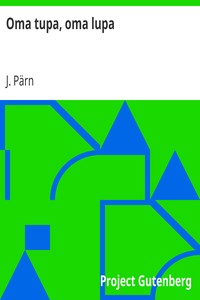| Summary |
"Oma tupa, oma lupa" by J. Pärn is a work of fiction written in the late 19th century. The story focuses on the struggles and aspirations of the Estonian peasantry, particularly highlighting themes of ownership and personal freedom. The main character, Risto, is depicted as a hardworking farmer grappling with the remnants of oppression and striving for a better life for himself and his community. The opening of the book introduces readers to Risto's difficult circumstances as a peasant in a society still recovering from centuries of serfdom. He reflects on his life of toil and the harsh realities of having no real ownership over his home or land, feeling like an intruder even within his own dwelling. The chapter paints a picture of his interactions with the oppressive forest warden, Tommi, who embodies the disdain and arrogance of the ruling class. Risto's determination to improve his situation becomes evident as he contemplates the possibility of earning enough to buy his home. Interwoven with reflections on his family's past, the societal structure they inhabit, and hopes for a brighter future, the narrative sets the stage for Risto's journey toward self-determination and the challenge of confronting ingrained social hierarchies. (This is an automatically generated summary.)
|

